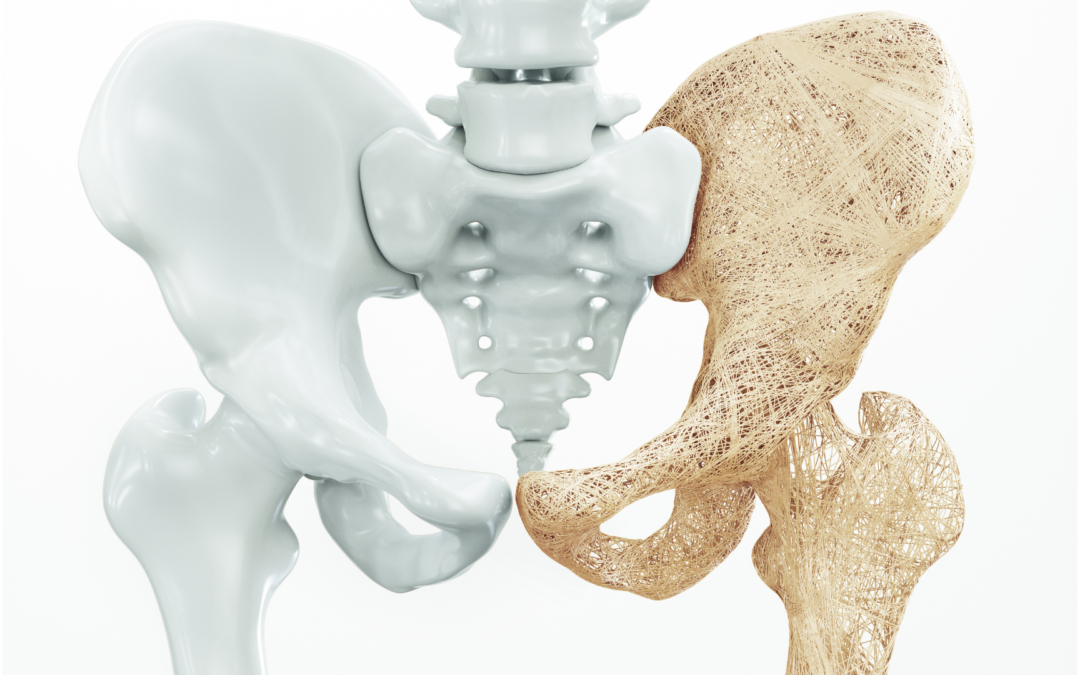Osteoporosis is often either the primary or secondary priority in women over the age of 60. It should however be a consideration for all women (and men) from their 20’s. As this is where we have the best chance to create the largest base in bone density, to prevent the effects of osteoporosis in older age.
There are 2 major areas we treat as physiotherapists in regards to osteoporosis.
- The first are the direct effects, helping to improve bone density. Previously we thought that weight bearing exercises could ‘hopefully’ reduce the rate of loss in bone density as you get older, but couldn’t stop the decline. More recent studies have shown (and we have seen first hand), that by adding classic strength and conditioning exercises such as deadlifts and squats into your regime (especially combined with osteoporosis medication such as Prolia) can improve bone density. Age is not a limiting factor and even women in their 80’s and 90’s can lift weights to improve bone density.
- The second way we can help, is to deal with the change in activity level due to osteoporosis. The reduction in bone density/weakness usually leads to less activity, which ultimately results in weakness, poorer muscles, injury and further weakness. We can start to reverse this trend. We do this by both addressing the weakness and dealing with the injuries due to the weakness, such as back pain and hip issues, our role is to make you stronger and be able to do more things without restriction.
The biggest misconceptions about osteoporosis?
- Osteoporosis can’t be helped – This used to be the case, but with better medication available (such as Prolia) and our knowledge about weight-bearing exercises, this is no longer an inevitability. Firstly, talk to your doctor or specialist about regular testing for markers of osteoporosis and make sure you have regular check-ups. Secondly, see your physiotherapist or exercise physiologist about starting a regular and progressive, weight bearing strengthening program and work on the things you can control about your bone density.
• Osteoporosis is a problem just for women – Over the age of 50, up to 1 in 4 men can have osteoporosis. This is not just a “female” problem and unfortunately, men can find out they have osteoporosis only after they have broken a bone. Although men tend to have a larger base of bone mass than women, they do not experience the acceleration of bone loss that happens after menopause (due to lower estrogen levels). After the age of 65, the rate of decline in bone mass in men is the same as for women, so it is important to get regular checks by your doctor and continue to work on your bone density.
What are the risk factors of developing osteoporosis and what can be done?
There are many risk factors for osteoporosis, some under our controls and some not.
Risks not under our control:
• Being female and post-menopausal (Better Health Channel, 2020) – Menopause causes a reduction in your regular levels of estrogen which is important for maintaining normal both health
• Chronic diseases – Such as thyroid disorders, rheumatoid arthritis, liver, kidney disease and issues affecting the bowel and digestive system all effect the absorption and ability for your body to use calcium and other nutrients to maintain and improved body density
Risks that may be under your control:
• Lifestyle changes – such as adequate calcium intake (1000mg per day and 1200mg per day for women over 50 and men over 70), Vitamin D intake, smoking, excessive alcohol and caffeine intake are all factors we can control and change to both change the risk of and reduce the progression of osteoporosis in our lives
• Weight-bearing exercise – Making weight-bearing exercises, in particular lifting under the guidance of a qualified physiotherapist or exercise physiologist, 2-3 times a week that uses most of the major muscle groups is not only the standard recommendation by the American College of Sports Medicine, but also the best option for managing osteoporosis.
The 2 most important first steps in helping to manage osteoporosis is:
1) Get it assessed – See you doctor and find out where you stand and start managing the risks you can control.
2) Start weight-bearing exercise – You can take a pro-active step in improving your bone density and reducing your risk of osteoporosis effecting your life or lifestyle
Contact us on admin@mdheath.com.au or call us on 03 9857 0644 or 03 9842 6696 to book your next appointment or book online here.
References:
Do you have any questions?
- Call us on (03) 9857 0644 or (07) 3505 1494 (Paddington)
- Email us at admin@mdhealth.com.au
- Check out our other blog posts here
Our clinical staff would be happy to have chat if you have any questions.



